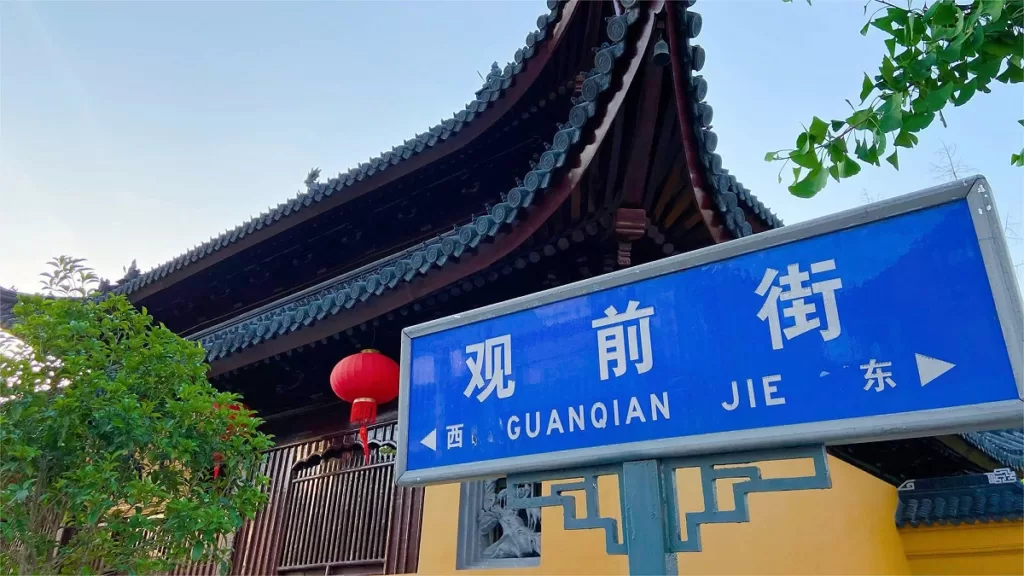Shantang Street (山塘街), with its ancient charm and historical significance, weaves through the heart of Suzhou, extending from the northwest near Huqiu to the southeast at Changmen, covering a length of 3600 meters, approximately seven li (Chinese miles). Renowned as the “Seven Li Shantang,” the street runs parallel to the Shantang River, adorned with ancient bridges spanning the water, flanked by traditional houses with whitewashed walls and black-tiled roofs, as well as a myriad of shops. As night falls, the glow of red lanterns reflects in the river, creating a picturesque setting perfect for photography. Visitors can also enjoy boat rides, savor tea in local teahouses, or indulge in the melodies of Pingtan, a traditional Suzhou storytelling art.
Shantang Street has roots dating back to the Tang Dynasty when Bai Juyi, serving as the governor of Suzhou, initiated the dredging of the northwest river channels outside the city. This effort led to the creation of the Shantang River, and along its banks, the ancient Shantang Street emerged. A shrine dedicated to Bai Juyi, known as Baigong Temple, stands at the southern end of the street, a testament to the gratitude of the people for his contributions. The Qing Dynasty’s Emperor Qianlong held a particular fondness for the Seven Li Shantang, inscribing the “Shantang Xunsheng” stele (a stone tablet) with his calligraphy, which remains well-preserved to this day. The street is adorned with numerous historical landmarks, including archways, ancestral halls, and guildhalls, most of which were established during the mid-Qing period and served as offices for out-of-town business associations.
The southeastern section of Shantang Street, adjacent to Changmen, is known as “Shantang Old Street” and spans approximately 360 meters. This segment is characterized by a denser concentration of shops, featuring various craft stores and eateries. Notable attractions include Yuhan Hall, Antai Jiu Huo Hui (Firefighters’ Association), Tonggui Bridge, Suzhou Chamber of Commerce Museum, and the Ancient Theater, making this area a vibrant commercial hub with a predominantly tourist atmosphere.
Table of Contents
- Basic Information
- Location and Transportation
- Highlights of Shantang Street
- Vlog about Shantang Street
- Useful Information Summarized from Reviews
- Attractions near Shantang Street
- Other Historical Streets in Suzhou
Basic Information
| Website | http://www.shantangjie.com.cn/ |
| Estimated Length of Tour | About 3 hours |
| Ticket Price | General Pass: 45 RMB Boat Ride: 25 RMB per person |
| Opening Hours | 8.30 – 21.30 |
| Telephone Number | 0086-0512-65314467 |
Location and Transportation
Shantang Street is situated in the city of Suzhou, which is located in the eastern part of Jiangsu province, China. Suzhou is renowned for its picturesque canals, classical gardens, and rich cultural heritage, making it a popular tourist destination. To get there, you can choose the following ways:
Bus: Take bus 7, 34, 46, 204, 304, 317, 318, 406, 415, 522, 921, 949, 970, or 980, get off at Shantang Street Stop (山塘街站), and you will be standing at the center of the street.
Metro: The nearest metro station to the attraction is Shantang Street (山塘街) on line 2. After getting out of the station from Exit 3, you will see the street right in front of you.
Highlights of Shantang Street
Ancient Bridges
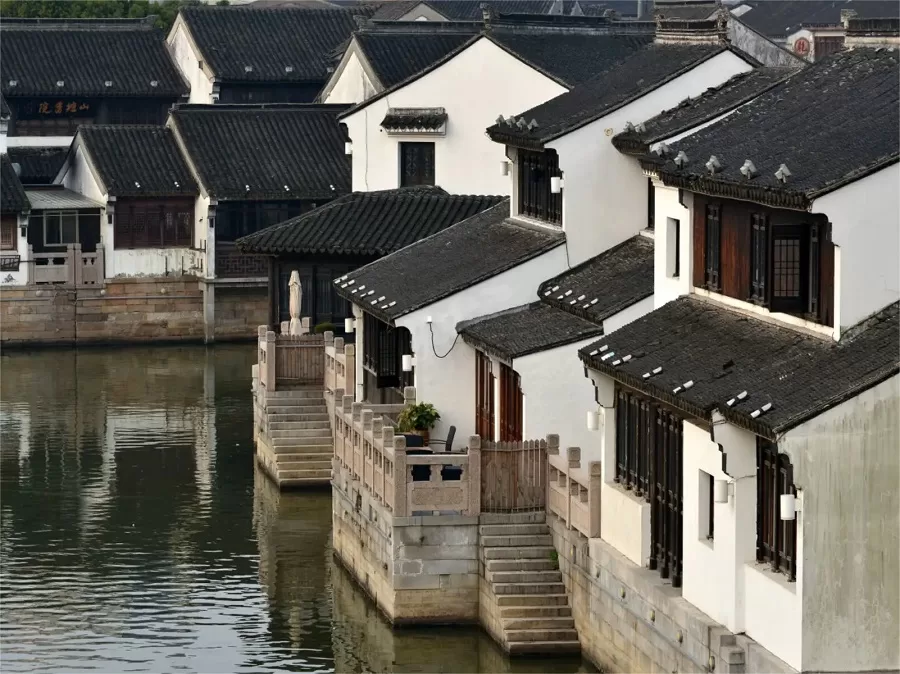
Shantang Street boasts a collection of seven ancient stone bridges crossing the Shantang River: Shantang Bridge, Tonggui Bridge (also known as Ruiyun Bridge), Star Bridge, Caiyun Bridge (also known as Bantang Bridge), Puji Bridge, Wangshan Bridge (formerly known as Bianshan Bridge), and Xishan Temple Bridge. Additionally, there are eight ancient bridges along the riverbank: Baimu Bridge, Maojia Bridge, Tong Bridge (formerly known as Dong Bridge or Shen’an Bridge), Baigong Bridge, Qingshan Bridge, Lushui Bridge, Zhenzhuo Bridge, and Wandian Bridge. Four of these bridges, Shantang Bridge, Caiyun Bridge, Bianshan Bridge, and Dong Bridge, date back to the Song Dynasty. Star Bridge was once the bustling center of commerce in the area. To the north and south of Xishan Temple Bridge are the Flower God Temple and Xishan Temple.
Shantang Canal

The Shantang Canal gracefully winds its way alongside Shantang Street, adding an undeniable allure to the ancient thoroughfare in Suzhou, China. This picturesque waterway has a history spanning over a millennium, dating back to ancient times. Lined with ancient willow trees and adorned with beautiful stone embankments, the canal exudes a tranquil and timeless atmosphere. Visitors can enjoy serene boat rides, gliding under traditional arched stone bridges, while taking in the reflections of historic buildings on its placid surface. The Shantang Canal epitomizes the charm and cultural significance of this iconic street, making it an integral part of Suzhou’s enchanting allure.
Museums
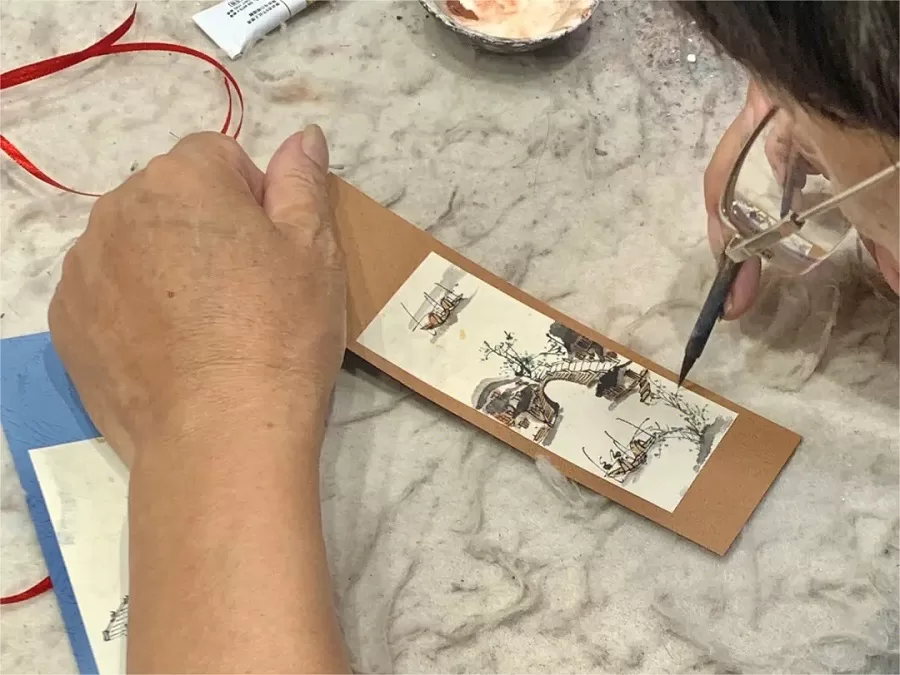
The Suzhou Chamber of Commerce Museum, inaugurated in 2005 to commemorate the centenary of the Suzhou Chamber of Commerce, is housed in the former Quanzhou Guild Hall outside Changmen. As the second commerce-related museum in China at the time, it serves as a platform for showcasing the history and culture of Suzhou’s commerce through archival materials, providing valuable insights into the people, events, and artifacts of the past century.
The Shantang area also features the Shaoxing Guildhall site and the Jiangnan Ship Culture Exhibition Hall. The latter exhibits dozens of ship models representing various historical vessels, including ships from the Spring and Autumn Period, cormorant fishing boats, Zheng He’s ships, sand ships, and cargo boats. The exhibition includes ship components, onboard tools, and related images, showcasing the rich maritime culture of Jiangnan.
Local Cuisine
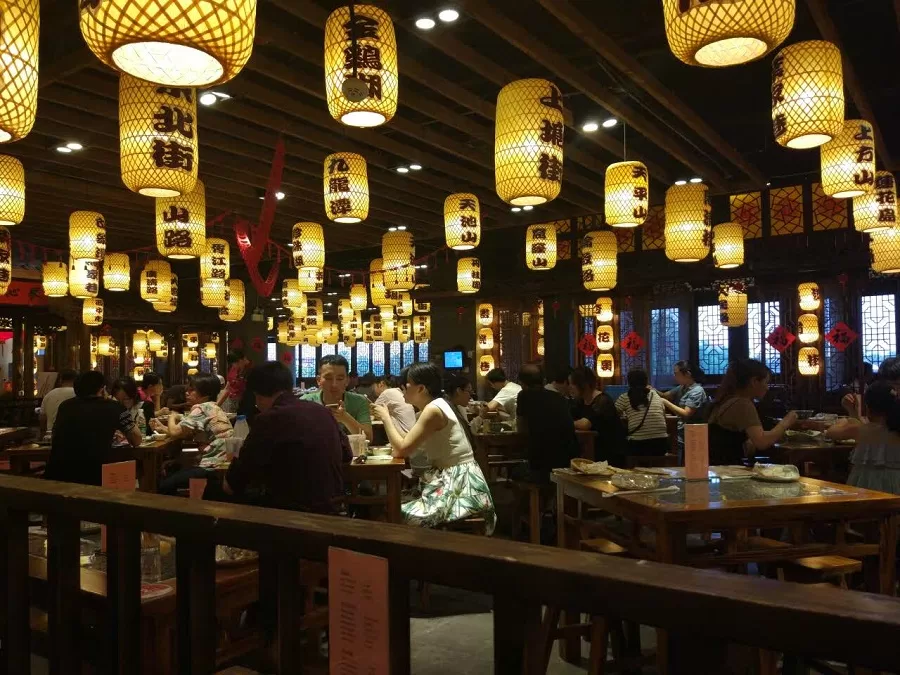
Shantang Street is a gastronomic delight, offering a delectable array of local cuisine that tantalizes the taste buds of every visitor. Renowned for its rich culinary heritage, the street showcases authentic Suzhou dishes known for their delicate flavors and artistic presentation. From the famous sweet and sour Mandarin fish to savory crab dishes, each bite unveils a symphony of tastes. Steamed buns, dumplings, and other regional delicacies fill the air with enticing aromas. Visitors can savor these delectable offerings at quaint teahouses and traditional eateries, immersing themselves in a culinary journey that truly captures the essence of Suzhou’s culinary traditions.
Five-Person Tomb
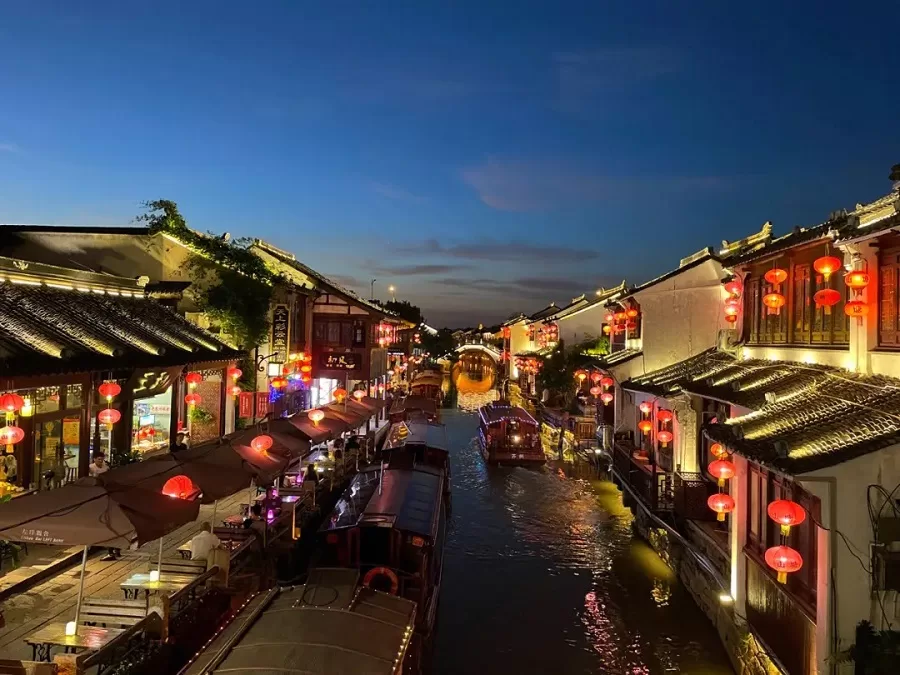
The Five-Person Tomb stands as a memorial to the five martyrs -Yan Peiwei, Yang Nianru, Zhou Wenyuan, Shen Yang, and Ma Jie -who sacrificed their lives during the Ming Dynasty in Suzhou’s struggle against oppression. In the sixth year of the Tianqi era (1626), Wei Zhongxian, a confidant of the emperor, colluded with the governor Mao Yilu and the eunuch Li Shi to ruthlessly exploit the people of Suzhou. Falsely accusing figures like Zhou Shunchang, known as the “Seven Gentlemen” of the Donglin Party, the tyrants led a brutal suppression. In response, the people of Suzhou rose up in a massive resistance. When Wei Zhongxian falsely accused the people of Suzhou of plotting rebellion and sent troops to quell the uprising, Yan Peiwei and the other four martyrs surrendered to protect the populace. Facing execution, the five heroes exchanged smiles, cursing Wei Zhongxian, and bravely met their end. The people of Suzhou dismantled the “Pu Hui Sheng Shrine” built by Mao Yilu for Wei Zhongxian and buried the remains of the five martyrs on the foundation, erecting a monument with the inscription “Tomb of the Five Heroes.”
Ancient Theather
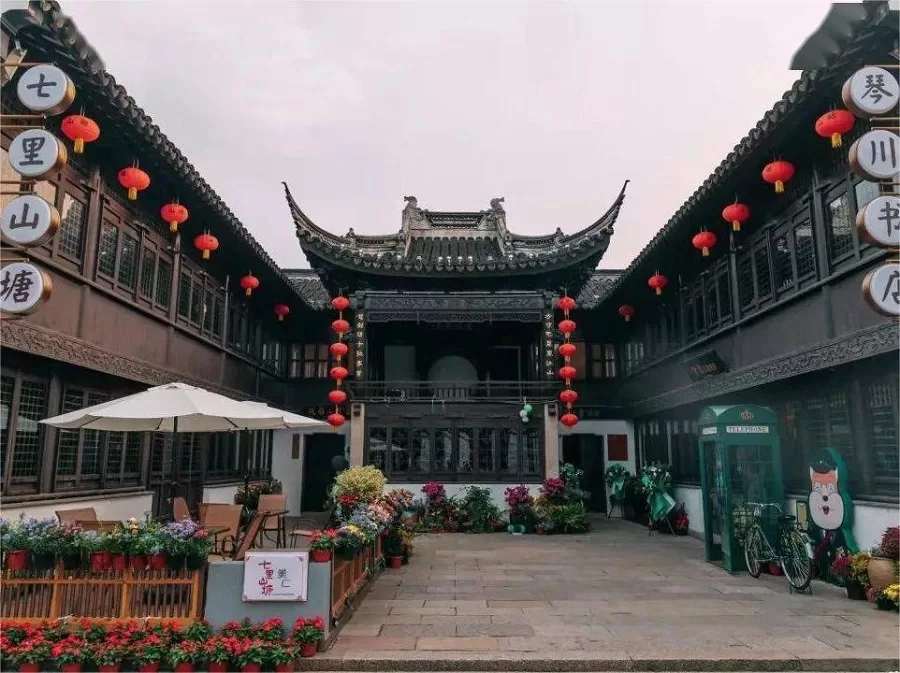
The ancient theater on Shantang Street, located west of Tonggui Bridge, covers an area of 310 square meters. Facing north, the theater features a square shape with a distinctive overhanging roof adorned with flying eaves. The granite-paved space in front of the stage serves as an area for spectators. The side buildings house cultural facilities such as bookstores and a museum of old photographs. The theater, with two stories, has a half-wall on the ground floor with wooden-framed glass windows. Four square stone pillars at the corners support the upper stage, while red lanterns hang under the eaves on both sides, bearing the characters “Shantang.”
Vlog about Shantang Street
Useful Information Summarized from Reviews
Cultural Performances at Ancient Stage: On weekends and holidays, you might encounter cultural performances at the Ancient Theater Stage (古戏台).
Boat Ride Information: Boat tickets are available from 8:00 AM to 9:00 PM, with a cost of 50 yuan per person for a sightseeing boat. Both Bai Juyi Wharf and Ancient Stage Wharf offer boat rides, with prices varying based on the route and time.
Crowd Considerations: It’s mentioned that the area can still be crowded, especially in the evening, so plan accordingly and be prepared for larger crowds during weekends.
Ideal Photography Spots: Xinmin Bridge (新民桥) and Tonggui Bridge (通贵桥) are highlighted as excellent locations for photography. These spots offer picturesque views and are recommended for capturing memorable moments.
Optimal Boat Ride Timing:
Choosing the boat ride around 5:00 PM is suggested for the best experience, allowing you to appreciate both the sunset and the evening lights. This time is also convenient as it tends to have fewer queues.









